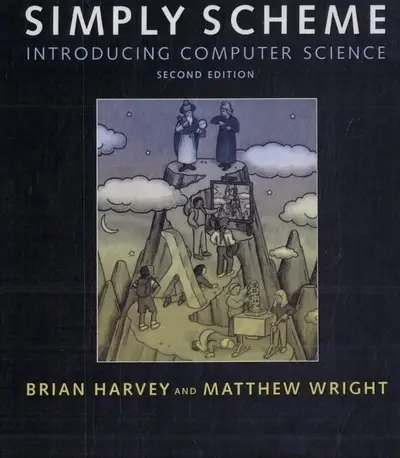"Simply Scheme - 2nd Edition: Introducing Computer Science" by Brian Harvey, Matthew Wright
MIT Press | 1999 | ISBN: 262082810 9780262082815 | 613 pages | PDF/djvu | 5 MB
MIT Press | 1999 | ISBN: 262082810 9780262082815 | 613 pages | PDF/djvu | 5 MB
This book is as much about thinking like Scheme as it is about the basic nuts and bolts of the language. Sections on using software patterns in Scheme help bring this new edition up to date. Though not often used in business, Scheme and its cousin Common Lisp (which the book describes in an appendix) are still favored by computer scientists, for example, in artificial intelligence research. The text allows the student to experience the computer as a tool for expressing ideas, not as a frustrating set of mathematical obstacles. This goal is supported by the use of Scheme, a modern dialect of Lisp, designed to emphasize symbolic programming.
PDF: pdf MegaUp Mirror • | • pdf ES Download
DJVU: djvu MegaUp Mirror • | • djvu ES Download
For anyone learning the Scheme programming language, the second edition of Simply Scheme: Introducing Computer Science provides a very digestible textbook-style introductory tutorial to this powerful and elegant language. In the words of the authors, Simply Scheme is designed to be a "prequel" to another book, Structure and Interpretation of Computer Programs. This latter title has been a staple of introductory computer science courses for years, but it assumes a certain background. Simply Scheme works hard to make the somewhat tricky ideas of Scheme accessible. This tutorial stresses small sections on key language features, from basic functions, variables, and onward to recursion and other functional programming concepts. While languages like C++ and Java use objects to model data, Scheme programmers break a problem down into functions.
The art and elegance of problem solving in Scheme comes from applying recursion and other design concepts. Longer code samples in the book include a tic-tac-toe game, examples that work with poker and bridge, and a working spreadsheet demo.
Throughout, the book employs a friendly and jargon-free approach to programming.
Contents
I Introduction: Functions
Foreword
Preface
To the Instructor
Acknowledgments
1 Showing Off Scheme
2 Functions
Thinking about What You’ve Done
II Composition of Functions
3 Expressions
4 Defining Your Own Procedures
5 Words and Sentences
6 True and False
7 Variables
III Functions as Data
8 Higher-Order Functions
9 Lambda
Project: Scoring Bridge Hands
10 Example: Tic-Tac-Toe
IV Recursion
11 Introduction to Recursion
12 The Leap of Faith
13 How Recursion Works
14 Common Patterns in Recursive Procedures
Project: Spelling Names of Huge Numbers
15 Advanced Recursion
Project: Scoring Poker Hands
16 Example: Pattern Matcher
V Abstraction
17 Lists
18 Trees
19 Implementing Higher-Order Functions
VI Sequential Programming
20 Input and Output
21 Example: The Functions Program
22 Files
23 Vectors
24 Example: A Spreadsheet Program
25 Implementing the Spreadsheet Program
Project: A Database Program
VII Conclusion: Computer Science
26 What’s Next?
Appendices
A Running Scheme
B Common Lisp
C Scheme Initialization File
D GNU General Public License
Credits
Alphabetical Table of Scheme Primitives
Glossary
Index of Defined Procedures
General Index
with TOC BookMarkLinks
More : You find here



